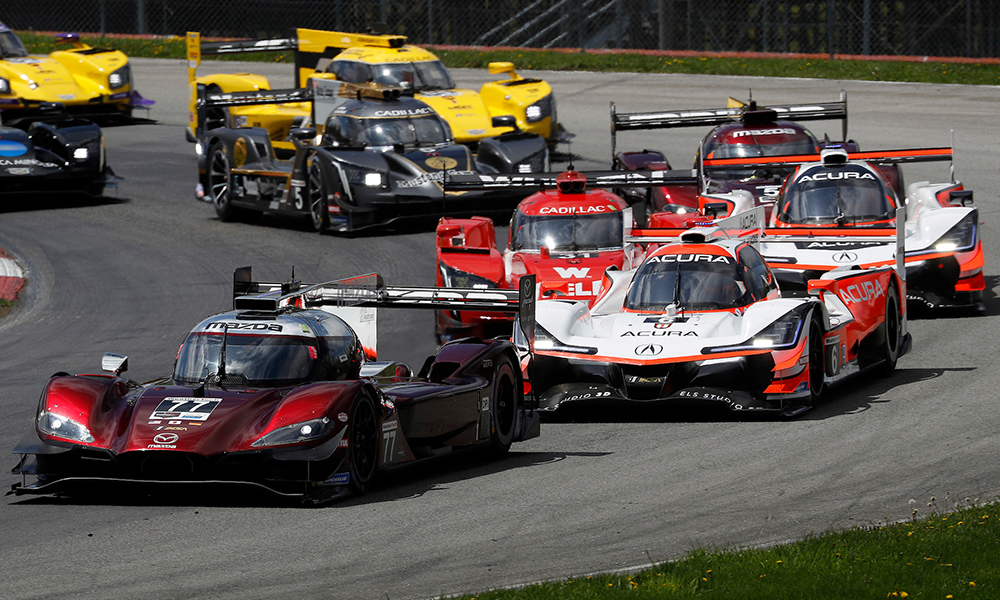
Photo: Mike Levitt/IMSA
With less than 16 months before the start of the 2020-21 FIA World Endurance Championship season, regulations for the series’ top class have yet to be finalized.
Multiple deadlines to define the next-generation ruleset, first revealed at last year’s 24 Hours of Le Mans under the ‘Hypercar’ moniker, have come and gone, and even last-ditch efforts to allow production-based hypercars into the top class have not gained traction among manufacturers.
Quite frankly, the FIA and ACO appear to be in a state of crisis.
Officials from both organizations declined to comment on the situation during last weekend’s Six Hours of Spa, where Toyota Gazoo Racing unsurprisingly clinched the LMP1 teams’ world championship, a title introduced for the 2018-19 ‘Super Season’ due to the lack of manufacturers present in the top class.
With the Japanese manufacturer running away with race wins, despite even the biggest concessions made to the non-hybrid privateers, and Toyota declaring intentions of retiring its TS050 Hybrid following the 2019-20 season, the WEC needs new regulations, and they need to define them now.
Despite boasting a somewhat healthy grid of non-hybrids, with entries from SMP Racing, Rebellion Racing, DragonSpeed and ByKolles, the world championship cannot survive on privateers alone, especially with a looming reduced factory presence in GTE-Pro.
A media roundtable at Sebring, site of the WEC’s return to the Florida airfield circuit in March, showcased the current lack-of-direction from championship organizers, with a proposal revealed to balance prototype hypercars, production-based hypercars, grandfathered LMP1 non-hybrids and potentially others, all into a single class.
Yet, the literal free-for-all has still not delivered a firm commitment from a single OEM, with Toyota even lashing out on the “ridiculous” deadlines they’d face in order to build a car in time for the 2020-21 season, given the months of delays from the rules-makers.
FIA WEC CEO Gerard Neveu assured the media in March they’d have a “Plan B” in place should its latest concept not generate sufficient commitments from manufacturers.
In the months since, many have wondered what “Plan B” could exactly be.
It’s known that a coalition of GTE manufacturers have pushed forward the concept of GTE-Plus again, which would put the production-based cars, with significant power and aero adjustments, as the top class.
While a short-term fix, such a move would arguably be a detriment to the sport as a whole, not only in the instant elimination of its most competitive platform, but also leaving a significant gap in the European Le Mans Series and ACO-blessed IMSA WeatherTech SportsCar Championship.
Pundits and industry insiders have been stating the obvious for months, in that the global adoption of IMSA’s DPi platform would be the most sustainable route for manufacturers, privateer teams and for sports car racing worldwide.
And with all other options exhausted, it appears to be the only remaining choice that the FIA and ACO have.
Having shown previous distaste towards IMSA’s successful LMP2-based platform, recent comments by Neveu and ACO sporting director Vincent Beaumesnil have indicated they may have changed their tune.
Developments in recent weeks seem to point towards this very direction, with Neveu leaving the door open to DPi for the future, and a meeting reportedly having taken place between the ACO and IMSA on this subject late last month.
Additionally, ACO technical delegate Thierry Bouvet was present during last weekend’s DPi 2.0 Steering Committee meeting at Mid-Ohio, with Bouvet making the trans-Atlantic trip in the middle of the WEC’s penultimate round of the season at Spa.
With a May 1 deadline for at least one manufacturer to commit to its Hypercar plan having come and gone, “Plan B” may very well already be in motion.
How the French organizers would integrate DPi, amid the early stages of planning for IMSA’s so called DPi 2.0, which is slated to debut in Daytona 2022, is unclear. But a season or two of LMP1 non-hybrids and DPis racing together via Balance of Performance would surely produce better results than today’s on-track product in LMP1.
Privateer teams like Rebellion and SMP could continue with their existing machinery for an additional two or three seasons, while manufacturers like Toyota would affordably be able to outfit an LMP2 chassis with its own engine and styling cues as an interim project prior to the arrival of DPi 2.0.
It would also open the door for existing DPi manufacturers such as Cadillac, Acura and Mazda to compete in the 24 Hours of Le Mans, or even full WEC seasons, instantly adding new content to the top class.
Judging by the early interest of DPi 2.0, where nine manufacturers were represented in last week’s working group, the class would see even more OEM involvement once the new-generation ruleset debuts.
A representative from one manufacturer that’s not currently in DPi but involved in DPi 2.0 discussions told Sportscar365 they would gain instant approval from their board to enter should the platform be eligible in both IMSA and the WEC.
With IMSA President Scott Atherton remaining open to the prospects of a global platform, while moving ahead with its own well-executed roadmap for DPi 2.0, it’s never been a better time for the two powers of endurance racing to align and produce a single global platform.
The ACO will need to swallow a bit of its pride, but for the greater good of the sport, it needs to be done, and it has to happen now.
The views and opinions expressed on this web site are solely those of the original authors and other contributors. These views and opinions do not necessarily represent those of Sportscar365.com, John Dagys Media, LLC and/or any/all contributors to this site.

























